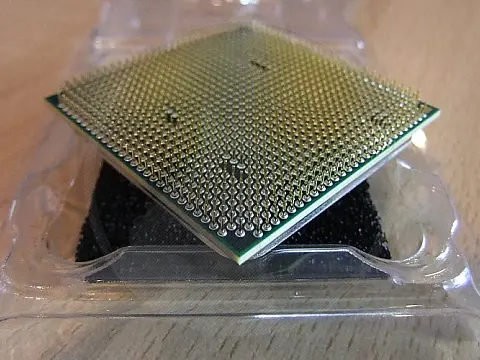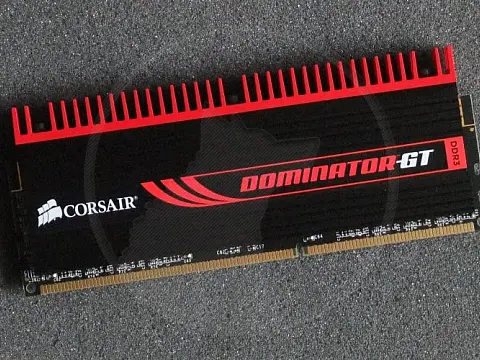Complete Guide on Building Your Own PC (Part 1 - Components)The range of options can be confusing, so this guide will clear up everything around about CPU, GPU and RAM when building your own PC
Demystifying the choices and options when selecting component parts in a desktop PC build. The range of options may be confusing, but this guide will clear up all you need to know about CPU, motherboard, GPU, and RAM choices.
This post is several years old and as such, some of the specifications/speeds have changed since writing. However, the information and recommendations are still perfectly valid. You may find components of higher specifications than mentioned in this article, if so get the highest specification you can.
Building a PC is not something that is complex nor should it be confusing. There are only three key questions you need to ask and the answers will determine the types of components chosen.
- What are you going to use this new computer for? Gaming, Media (viewing or production), Browsing the Web / Office work?
- What is your budget?
- Intel or AMD?
What Components Do I Need To Build a PC?
Before we start answering these questions, let's take a look at a shopping list of components you will need.
The Motherboard, also known as the main board, is the large circuit board that everything plugs into. There are different sizes and configurations but they all do the same basic job.
The CPU or Central Processing Unit is a special computer chip that performs complex mathematical operations. It acts as the "brain" of the computer.
The video card, or GPU (Graphics Processing Unit) is used to display content onto a screen. The GPU is a key component in gaming and media PCs and it's important to get one with good specs. For an office PC, this is less important.
RAM(Random Access Memory) or just memory, allows the computer to store data ready for the CPU to work with. When you run a program or game it is loaded into the memory so it can run on the CPU. When you turn off or reboot the computer anything in the memory is removed. Sometimes the memory can get corrupt and programs stop working. This is why turning it off and back on fixes most problems as the information is reloaded back into memory.
A Hard Drive, or more recently SSD, is a secondary storage device far slower than RAM but it does not lose data when its turned off. Secondary storage is far cheaper than memory so you can have a lot more of it, and can be used to store information indefinitely.
A Power Supply Unit (PSU) is used to convert 240v/110v AC mains electricity into 12v and 5v DC electricity which the components run off.
The final thing to consider is the case. Everything screws into the case and offers protection to the components.
Questions To Ask When Building a Computer
Now we know what the components are, the most important question to ask yourself is what are you going to use this computer for? Components for an office PC will be the cheapest as you do not need the high performance, fastest processor or huge amounts of RAM, but that is about all that the computer will be able to perform - you won't be able to play many games on it. A gaming PC built on the other hand will be the most expensive using top-of-the-range components and it will also be able to produce media and do office work.
The next question is down to your budget. How much can you afford to spend on this new computer?
While building yourself is generally cheaper than getting an off-the-shelf or professional build, there is plenty of scope for specification creep. This is when you aim to spend £50 on memory, but for an extra £10 you get 2 extra GB of RAM, same for the other components.
In general, a computer should last between 5-10 years. My current gaming PC I built in 2010 and it's still going strong. Spending a little extra, or leaving room for upgrades, costs a little more upfront, however, the life of the computer will be extended, it'll be cheaper in the long run and reduce electronic waste meaning it's better for the environment.
So if you want a computer with 8GB of RAM and have 4 RAM slots, opt for 2x4GB sticks rather than 4x2GB. While the 2GB sticks are cheaper, buying the 4GB sticks leaves 2 free slots for future upgrades when more funds are available or if you decide you need more RAM.
Choosing Components for What You Need

My personal thinking is to buy the highest specification at the time, a specification which is way beyond current gaming requirements, knowing it'll last a long time and as games get more advanced they slowly catch up to the computer specification. My 2010 build can still play most games on the highest settings although it's starting to suffer on some of the most modern. Another way of thinking is to buy components to match a specification for today's games. Spending upfront will be less, but as newer games are released you could notice quickly that the computer cannot cope, so you can spend a little at a time and upgrade to extra RAM or a new GPU in a year or two or when more funds become available.
Choosing a CPU
The last question asked above doesn't seem like an important question but it does drive the choice of motherboard and the CPU, and the other components to a lesser extent. There are two main CPU manufacturers for desktop PC - Intel and AMD. Both produce excellent CPUs and today the main deciding factor between them is price. Intel is generally a lot more expensive than a comparable AMD processor. You can go with whatever your budget allows, personally, I always go for AMD and have done for at least the last 20 years. When choosing a CPU the main things to compare are the number of cores and the core speed. These are usually stated as 3.2Ghz (clock speed = 3.2 Ghz - 3.2 billion operations per second) and the number of cores is stated as Quad Core (4 cores) or just 6 cores.
Choosing a Motherboard
Motherboards have a socket for the CPU, so when you look at a CPU specification it will also state the socket. For example, my AMD CPU is an AM3+ socket. An Intel chip may use an LGA-1366. When looking for a motherboard, chose one that supports the CPU.
The other thing to consider when choosing a motherboard is its form factor, that is its shape, size and location of connectors. The most common form factor is ATX which is pretty much the standard for desktop cases. Other form factors include Micro ATX and Mini/Nano/Pico. These are smaller and smaller boards used in small cases and media centre PCs.
Choosing a Graphics Card
As with CPUs, graphics cards come from two main manufacturers - nVidia and ATI. While you can use any graphics card with any CPU, ATI is owned by AMD and the components are theoretically optimized to work together. Personally I always go AMD and ATI. You don't necessarily need to go for the most expensive and fastest card if your budget doesn't allow it. The GPU is the easiest component to upgrade down the line.
Some graphics cards use a dual back plate which allows for extra cooling, so check that the case has enough free expansion ports.
Choosing RAM
After the CPU and the GPU, the RAM is the third most important factor when it comes to the overall performance of a build. There are a few things to consider when deciding on what RAM to opt for. First is the DDR version, this must match the motherboard specification. The motherboard specification will clearly state what RAM it supports, such as DDR3 or DDR4 and the number of slots. RAM is always paired and motherboards will typically have 2 or 4 slots. You must fill slots in multiples of 2, you cannot put three sticks of RAM in.
The next consideration is how much RAM do you need. The quick answer is as much as you can afford, and typically this is 8GB - 16GB. Gaming and video production (editing) use more RAM so go for 32GB if possible. A computer for office work will generally be OK with 8GB. Media centre which will do transcoding and streaming aims for around 16GB.
RAM is sold in packs of matching RAM sticks, so when you buy 8GB of RAM it'll say 2x4GB which is 2 4GB sticks. If you are building a gaming PC and want 32GB RAM but the budget won't stretch, go for 2x8GB giving you 16GB RAM and two free slots. You can buy another 16GB when the budget does allow. Just remember to get the same specification.
The speed of the memory you purchase or add to your computer is measured in megahertz. Most computers have either 1600 MHz to 2133MHz memory capacity, which is very efficient in handling modern computer applications. Check the motherboard specifications as to what frequency is supported and get the fastest you can.
Choosing Storage
A hard drive or SSD is a key component in your build but how much do you need? For a basic office computer around 500GB hard drive should be enough, but for gaming and media centres you need as much as you can get your hands on, and for gaming you need it to be as fast as possible.
SSD is the fastest type of storage but also the most expensive. For the price of a 256GB SSD you can buy 2TB hard drive which is approx 8 times more storage. Prices at the time of writing, SSD prices come down all the time.
For media centre PC and video production, I'd recommend hard drives 10k RPM speed, office computer can make do with 7200 RPM. Gaming I'd personally go for a 1TB SSD. Yes, it costs a lot, but the speed improvement is very noticeable and games not only load faster but the overall performance is also improved as things like textures are loaded dynamically from the SSD.
Another option for all but office PC users is to get two storage devices. I've used this method many times before. You need to get a smaller high-speed SSD, 256GB-512GB which will be the drive you install Windows and programs onto, then you get a second hard drive which is a high capacity, say 2TB, onto which you can install games and store all your data. This option is usually cheaper than going for a single large SSD and you get a lot more storage space for your money.
Choosing a Power Supply Unit (PSU)
Power Supply Units are often overlooked during a build but they are crucial and choosing the wrong one will leave you with a system that does not work at all, or it will crash and be unreliable. It is also crucial to get a good make as cheaper makes use lower quality parts and as a result either fail to deliver the required power, or fail completely. It's worth spending extra to get a quality PSU.
What Spec PSU do I need? This question depends on the specification of the parts you decided on. Generally, the GPU will state in the specifications or system requirements the minimum advised power supply and the connectors it needs. This is a value given in watts (W), for example, 500W. High-end gaming systems can go upwards of 1000W or more. The CPU will also state a system requirement for the power supply.
Power supplies generally are listed in 250W increments, so 250W, 500W, 750W and 1000W. There are exceptions to this - 300W and 800W. I usually take the recommended specification from the graphics card, say 500W and go one or two steps up to 800W. If the recommended was 800W I'd go for 1000W. This is because it's never a good idea to run components at 100% of their capacity.
These are a lot of watts I hear you say. This is the peak power it's capable of delivering, it's not the amount of power that is used all the time. Typically (at the time of writing anyway) a desktop computer sat idle will be drawing between 200W and 300W. When you play games this could rise to 600W or more if you have dual graphics cards.
Why is a good PSU so important? Just because a power supply is quoted as being 500W doesn't mean it can deliver 500W or provide "clean" electricity. Cheaper PSUs use cheap capacitors which cannot hold a charge or they don't supply the current well. As a result, you end up with noise, fluctuations, dips and spikes in the electricity supply which is not good for the sensitive electrical components you just bought. At best a cheap power supply will be unreliable and will crash under load. At worst a spike will damage components or fail. Pay the extra for a good make from a reputable supplier it's worth it in the long run. Trust me, I have been there.
Choosing a Case
The choice of case is primarily down to personal aesthetics and preference. The case should be large enough to contain the components and support the motherboard form factor you chose. It's worth checking the GPU requirement to ensure that there is enough clearance for the card but this generally isn't an issue with standard ATX cases but could be for smaller micro cases.
There are hundreds of designs, shapes and colours to choose from so have a look around and choose one that you like the look of.
Cooling Options
The final thing to think about is cooling. Computers generate heat and we need to get rid of that heat before it overheats and breaks. Three main things need cooling and three main ways of cooling them.
The first thing we need to cool is the CPU. Generally, when you buy a CPU it comes with a heatsink and fan and is perfectly fine for normal use and an office PC I'd leave it like this. There are several upgrades to cooling which affect not only the cooling efficiency but also the noise generated from the fans.
The second component that needs cooling is the graphics card. All those games are going to generate a lot of heat. Again, GPUs come with heatsink and fans already attached and generally, they work well, albeit rather loud!
Thirdly we need to cool the case because the GPU and CPU heatsinks and fans have taken the heat from the chips to the air which is in the case. The case will get hotter and hotter and then the heatsinks won't be able to cool down as well and you'll overheat. Case cooling usually consists of two fans - one at the front to draw cold air in and one at the back to vent the hot air. Your case may come with these already fitted. If not they are only a few pounds/dollars to buy.
For most users an upgrade to the CPU cooling with an aftermarket heatsink and the fan is a good cost-effective way to improve cooling without spending a lot of money. If you choose an upgraded heatsink it's worth getting a tube of the thermal compound - Artic Silver for example, as this is far better than the "pad" that comes with the heatsink.
For gaming and high-performance computers "air cooling" as described above isn't enough to keep cool, and it doesn't look cool either, so another option is water cooling. This is highly efficient and nearly silent but does cost more. You can read more about water cooling in the article below.
Parts You (may) Need To Buy
Depending on what you already have around to use you may not need all of these, just make sure you either have each item or you buy it.
- CPU
- Motherboard
- RAM
- Storage Drive(s)
- Graphics Card
- Power Supply
- Case
- Fans for case (if not included)
- Keyboard & Mouse
- Monitor
- Western Digital Raptor 500GB
Putting it All Together
Now you've selected and bought all the parts, it's time to put it all together. I will continue the computer building in the next article.










![CoolerMaster Stacker ][ CoolerMaster Stacker ][](https://cdn.lonewolfonline.net/uploads/2011/12/IMG_8371_gallery.webp)










